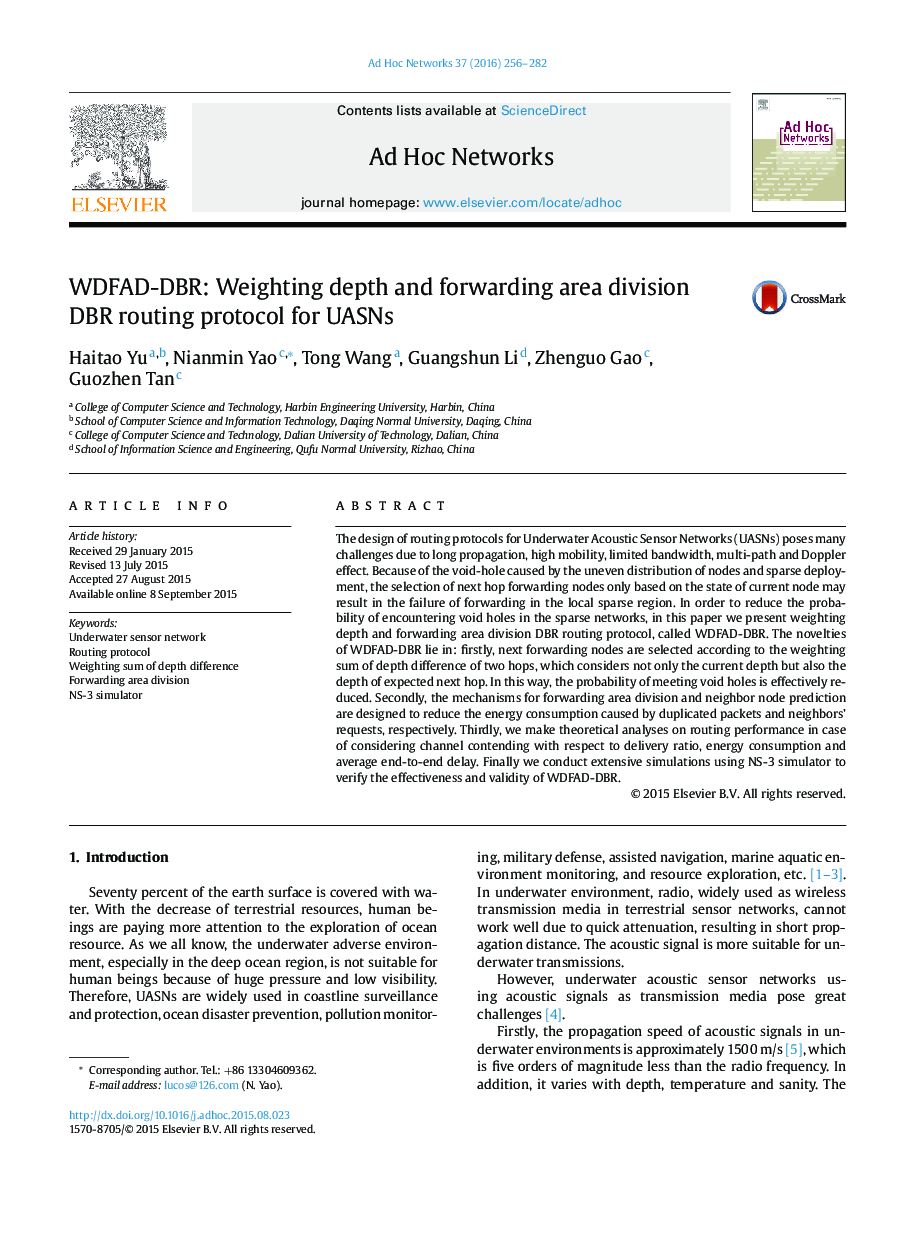| Article ID | Journal | Published Year | Pages | File Type |
|---|---|---|---|---|
| 447884 | Ad Hoc Networks | 2016 | 27 Pages |
The design of routing protocols for Underwater Acoustic Sensor Networks (UASNs) poses many challenges due to long propagation, high mobility, limited bandwidth, multi-path and Doppler effect. Because of the void-hole caused by the uneven distribution of nodes and sparse deployment, the selection of next hop forwarding nodes only based on the state of current node may result in the failure of forwarding in the local sparse region. In order to reduce the probability of encountering void holes in the sparse networks, in this paper we present weighting depth and forwarding area division DBR routing protocol, called WDFAD-DBR. The novelties of WDFAD-DBR lie in: firstly, next forwarding nodes are selected according to the weighting sum of depth difference of two hops, which considers not only the current depth but also the depth of expected next hop. In this way, the probability of meeting void holes is effectively reduced. Secondly, the mechanisms for forwarding area division and neighbor node prediction are designed to reduce the energy consumption caused by duplicated packets and neighbors’ requests, respectively. Thirdly, we make theoretical analyses on routing performance in case of considering channel contending with respect to delivery ratio, energy consumption and average end-to-end delay. Finally we conduct extensive simulations using NS-3 simulator to verify the effectiveness and validity of WDFAD-DBR.
